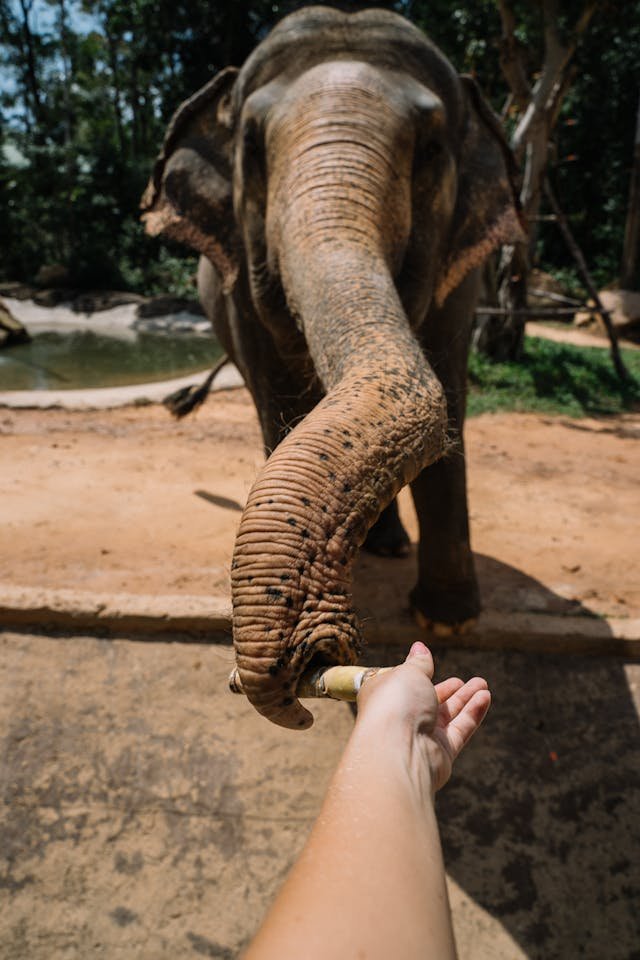Photo by Anna Tarazevich on Pexels – This image captures the moment a person hand-feeds an elephant, a common scene in many tourism facilities that label themselves as sanctuaries. While the gesture may feel friendly or intimate, feeding wild animals — especially with sugary snacks or treats — can be harmful to both their health and their behavior.
In truly ethical sanctuaries, animals are never encouraged to seek food from humans. Constant hand-feeding not only alters their natural diet but also teaches them to associate humans with treats, reducing their independence and increasing the risk of behavioral issues.
Encounters like this are carefully designed for tourists. But if elephants are expected to walk up and accept food from every visitor, what’s lost is their autonomy — and what’s gained is a business model rooted in control.
Real sanctuary work means putting the animal’s needs before the human experience. Feeding should be handled by trained caretakers, not visitors.
How to spot a real animal sanctuary (and avoid scams disguised as rescue)








